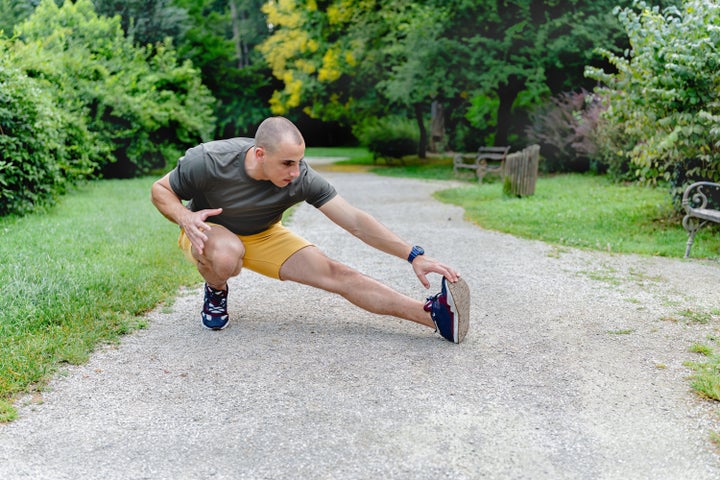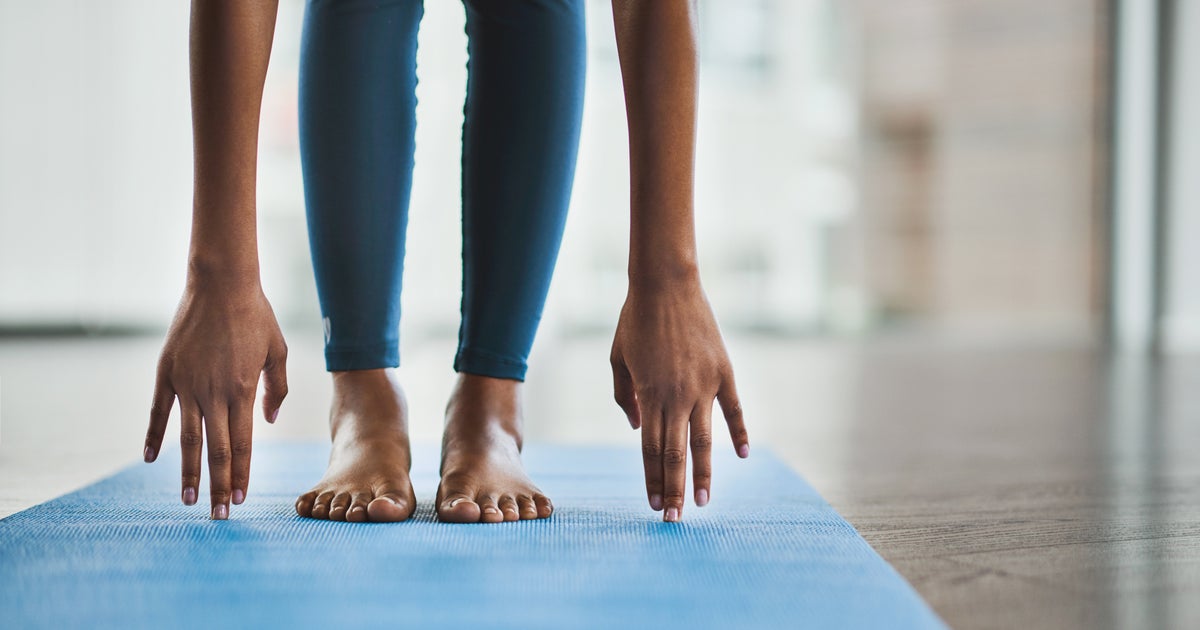If you’re of a certain age, you may remember the Presidential Fitness Test, a now-defunct physical fitness capability test in schools across the country. It was made up of multiple exercise challenges, and one of the factors it assessed was flexibility via a sit-and-reach test.
Flexibility has been a long-standing measure of physical health. Touching your toes is another marker. And for some people, touching your toes without bending your legs is simple. For others, though, it’s impossible. Does this matter? And does it say anything about your actual health?
Simply put: Should we all be able to touch our toes without bending our legs? Here’s what physical therapists say.
Being able to touch your toes is related to more than just flexibility.
“I’d say there’s a lot of factors that go into touching your toes, and it’s not just flexibility or hamstring length,” said Amanda Sachdeva, a physical therapist at the Hospital for Special Surgery in New York.
“It is also flexibility of your calf muscles and your lower back muscles ― these are also involved when trying to touch your toes,” Theresa Marko, a physical therapist at Marko Physical Therapy in New York and spokesperson for the American Physical Therapy Association, told HuffPost via email.
Beyond this, being able to touch your toes also has to do with your joint mobility and strength, Sachdeva said. “If your joint mobility is restricted … that can also affect how much you’re able to move. If you’re not able to stabilize the muscles by total contraction of different muscle groups, then that might affect how able you are to move.”
Your ability to touch your toes combines these three things, which also play a role in overall movement abilities. “There’s an inherent amount of tension and tightness in the hamstrings that is normal and provides support to the joints, but it becomes [a problem] more so if it’s affecting the joint mechanics and how you’re able to move,” according to Sachdeva.
Meaning, if your mobility isn’t impacted, it’s OK that you can’t touch your toes because being unable to touch your toes in itself isn’t the problem — not having mobility is a bigger issue.
Plus, flexibility and physical abilities vary from person to person.
Just because your partner can reach down and touch their toes doesn’t mean you should be able to do so.
“Flexibility varies from person to person,” Marko said. People have varying levels of joint mobility and ligament tightness, and this isn’t necessarily a bad thing.
There are also certain physical factors that can limit your flexibility, said Jason Bracco, a physical therapist at UofL Health. Folks who have a lot of fatty tissue or a lot of muscle tissue may have limited flexibility.
“And hydration can limit motion too. If we’re dehydrated … our body is made up, the majority of it is fluid, and so muscles need that fluid to be flexible and pliable,” Bracco said. Being sedentary can also hinder your flexibility, he said.

ProfessionalStudioImages via Getty Images
It’s better to focus on your overall mobility rather than one specific move like touching your toes.
“If you want to work on muscle flexibility, you want to be sure that you move frequently to keep the tissues lubricated and working,” Marko said.
Plus, keeping yourself mobile by exercising and stretching regularly is important for your overall health.
“We want to be able to functionally move, meaning being able to squat toward the ground, to be able to pick something up off the ground, or be able to lunge so that you can reach to get something off the floor, too,” Sachdeva said.
Getting up and down off the couch, out of a chair and off the toilet are things we commonly need to do, making this kind of movement important to keep up throughout your life.
“Just simply bending forward and touching your toes, we don’t do that movement that often during the day, so we don’t necessarily need the capacity to do that exact [movement],” Sachdeva added.
“If you want to be able to have a good quality life where things are easier for you, and going up and down the stairs is easier, and picking things up off the floor is easier, then the bottom line is you put a little effort into it and you train it, and then your body will adapt, and those things will be easier for you,” Bracco said.
If you do want to work on your strength, mobility and flexibility, start slow.
Getting in more movement is always a good goal. “Muscles that are conditioned to deal with movement and loading are less likely to become injured,” Brocco said.
It’s virtually impossible to avoid everyday movements like walking upstairs, bending over to pick something up and carrying groceries. If you’re sedentary and not challenging your body to move more as you age, you’ll be more likely to get hurt as you do these tasks, Brocco said.
“The key is to get up and get moving,” said Brocco, who added that it can be a good idea to join an organized class like yoga if you’re out of practice when it comes to movement.
And the movement you choose to do doesn’t have to be super time consuming. Instead, it can be broken up into small bouts throughout the day, he said. You could start by marching in place 10 times, doing butt kicks or doing squats, Brocco added.
If muscle flexibility is what you want to work on, Marko said you can try out different dynamic and static stretches — dynamic stretches are active stretches like arm circles and leg swings, while static stretches are slow movements that you hold like figure fours and the toe-touch stretch that’s the focus of this article.
Support Free Journalism
Support HuffPost
Already contributed? Log in to hide these messages.
It’s also good to practice practical movements like sit-to-stand, Sachdeva said. “I’d say a good squat form and lifting mechanics is more important than being able to touch your toes.”
Before diving into exercise, Bracco noted you should consult your health care provider. “If you have had a previous injury or surgery, you will want to make sure that you talk with your physician or physical therapist prior to performing any specific exercise.”
You can also consider seeing a physical therapist who can help you understand your body and abilities, especially since your joint mobility, muscle flexibility and muscle strength all play into your movement ability, according to Marko.
“Sometimes it’s difficult to know which one you might have a deficit in, so a physical therapist, who is an expert at looking at your entire body and how you move, can advise you on how to improve,” Marko said.
Your age, ability and certain health conditions are also factors. “Don’t be hard on yourself if touching your toes is something you’re unable to do,” Marko said.
Support Free Journalism
Support HuffPost
Already contributed? Log in to hide these messages.







